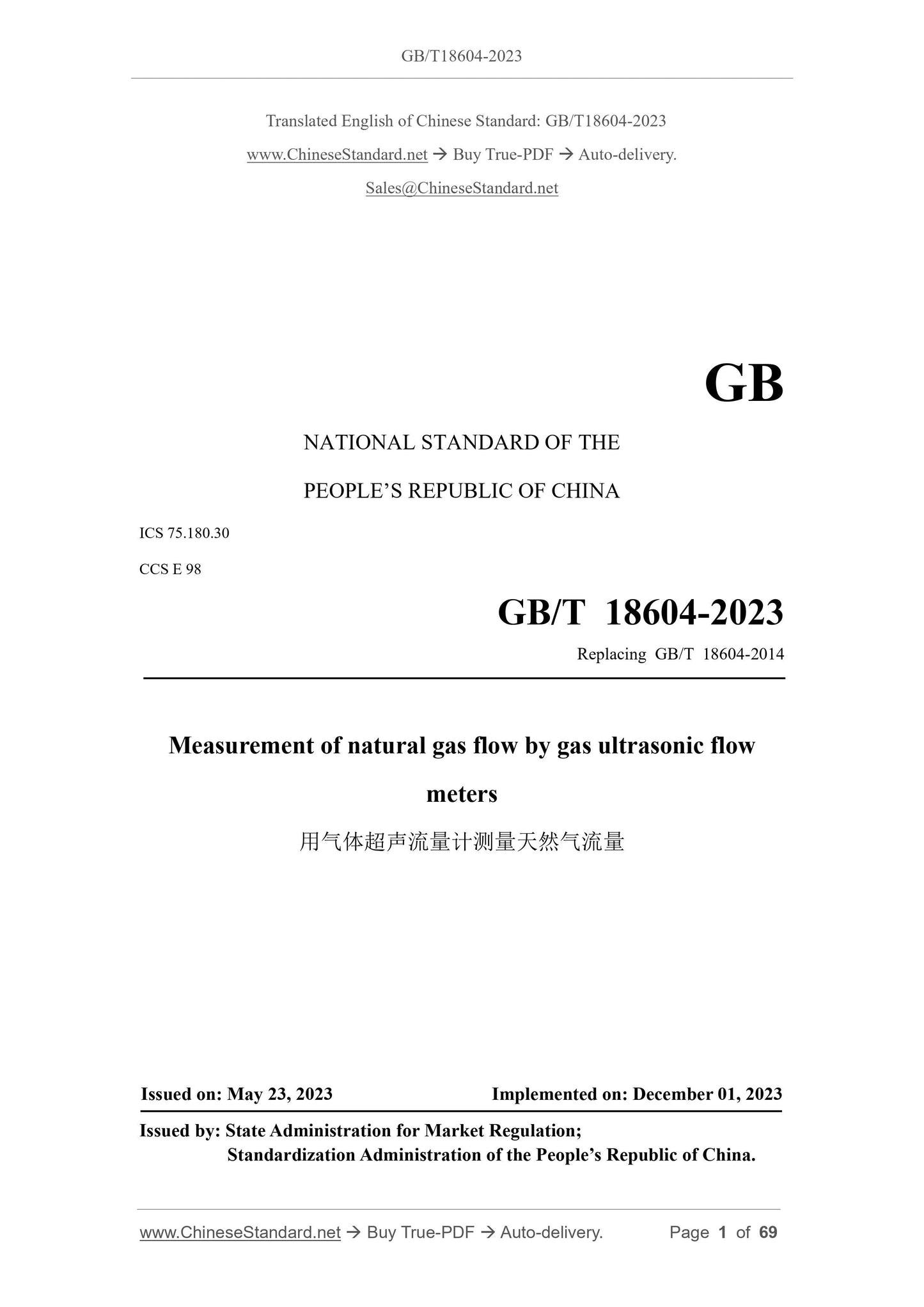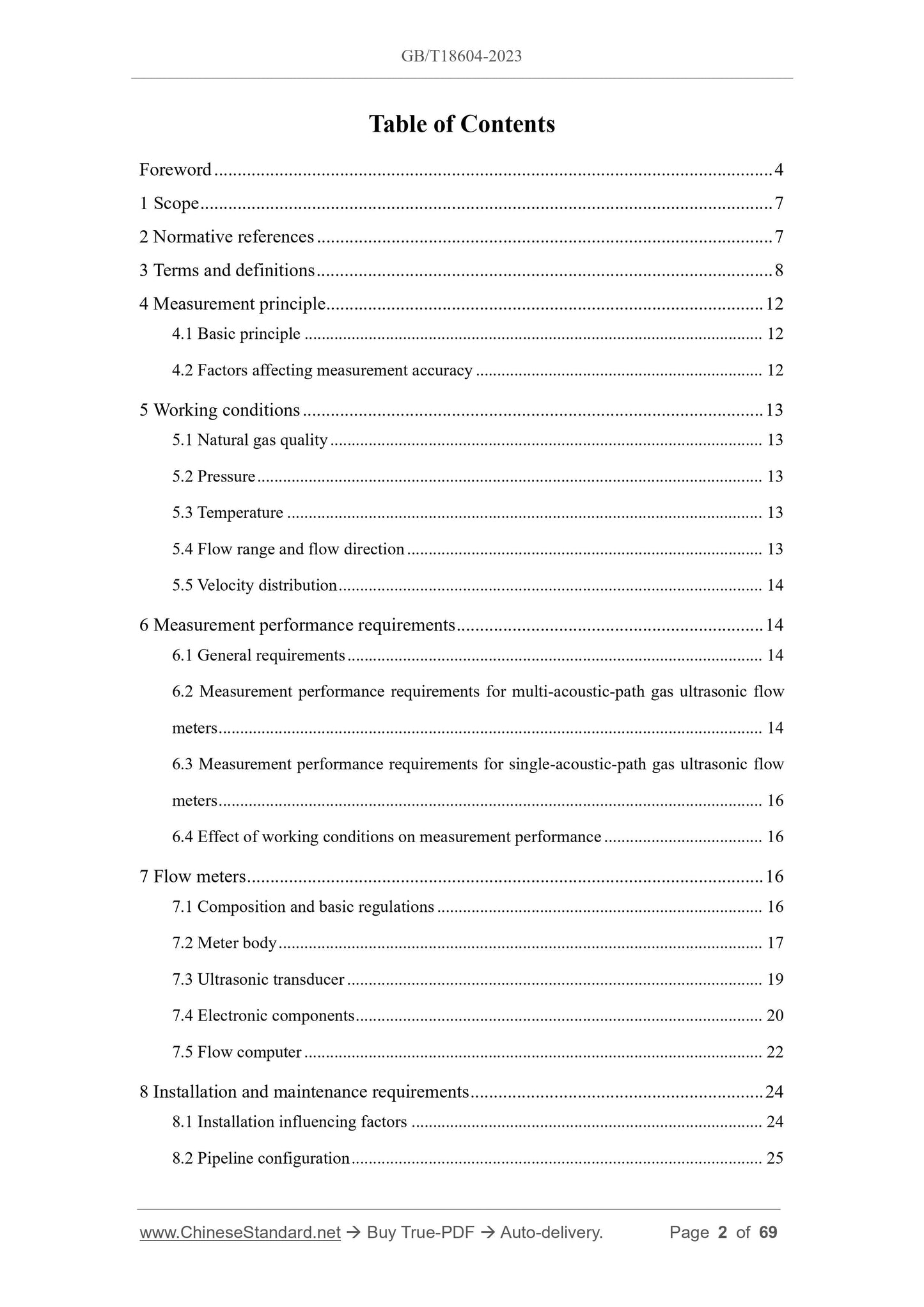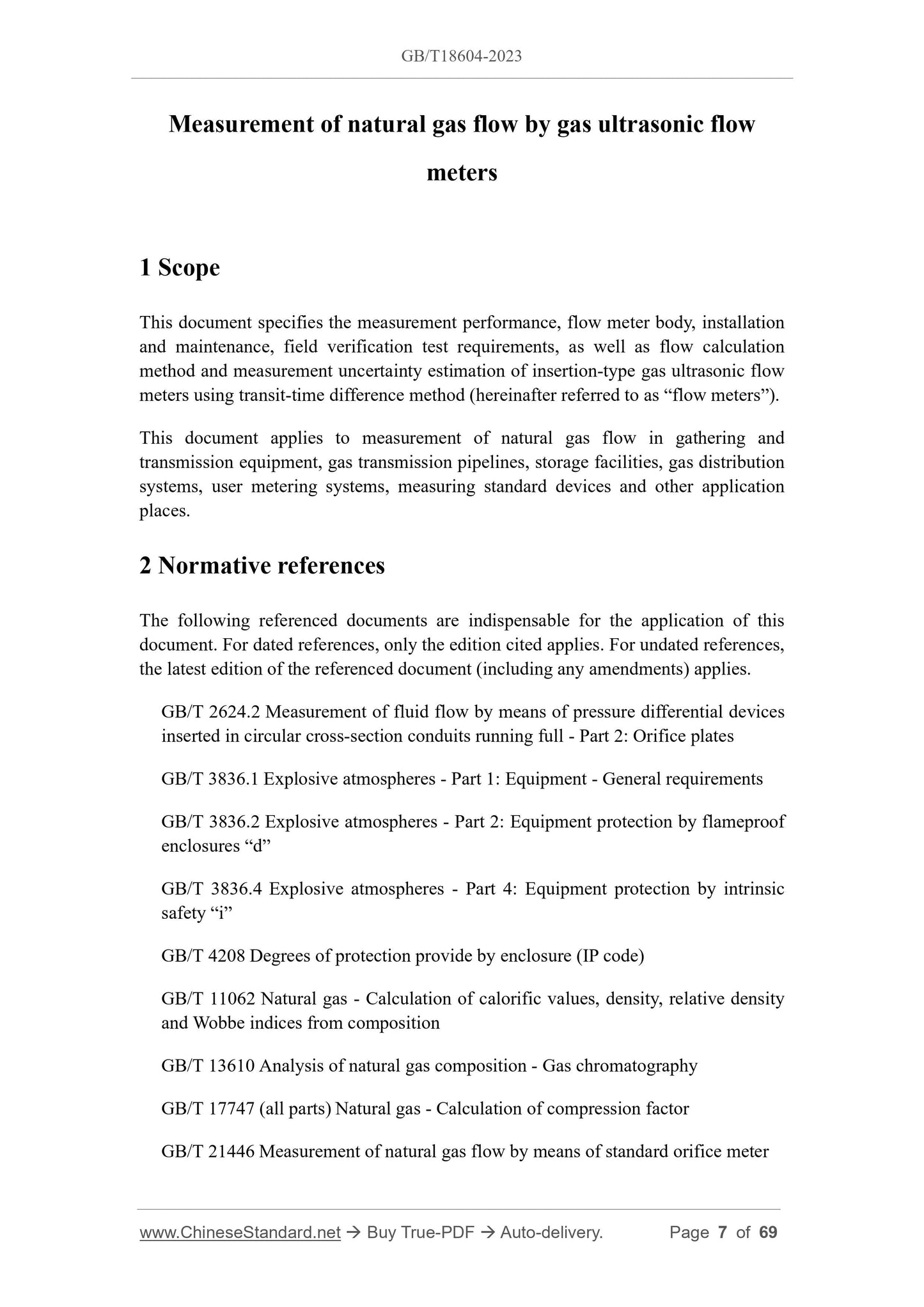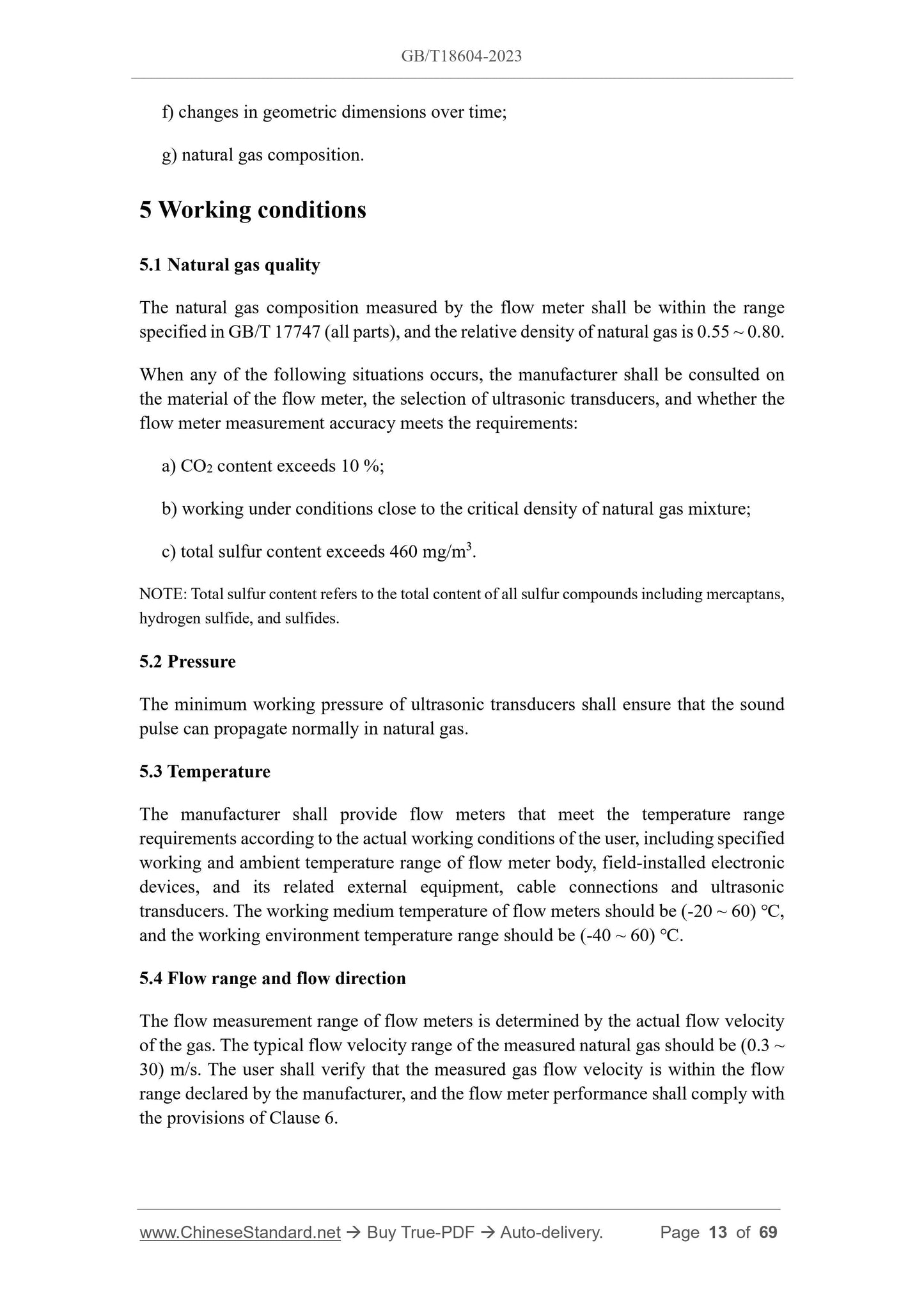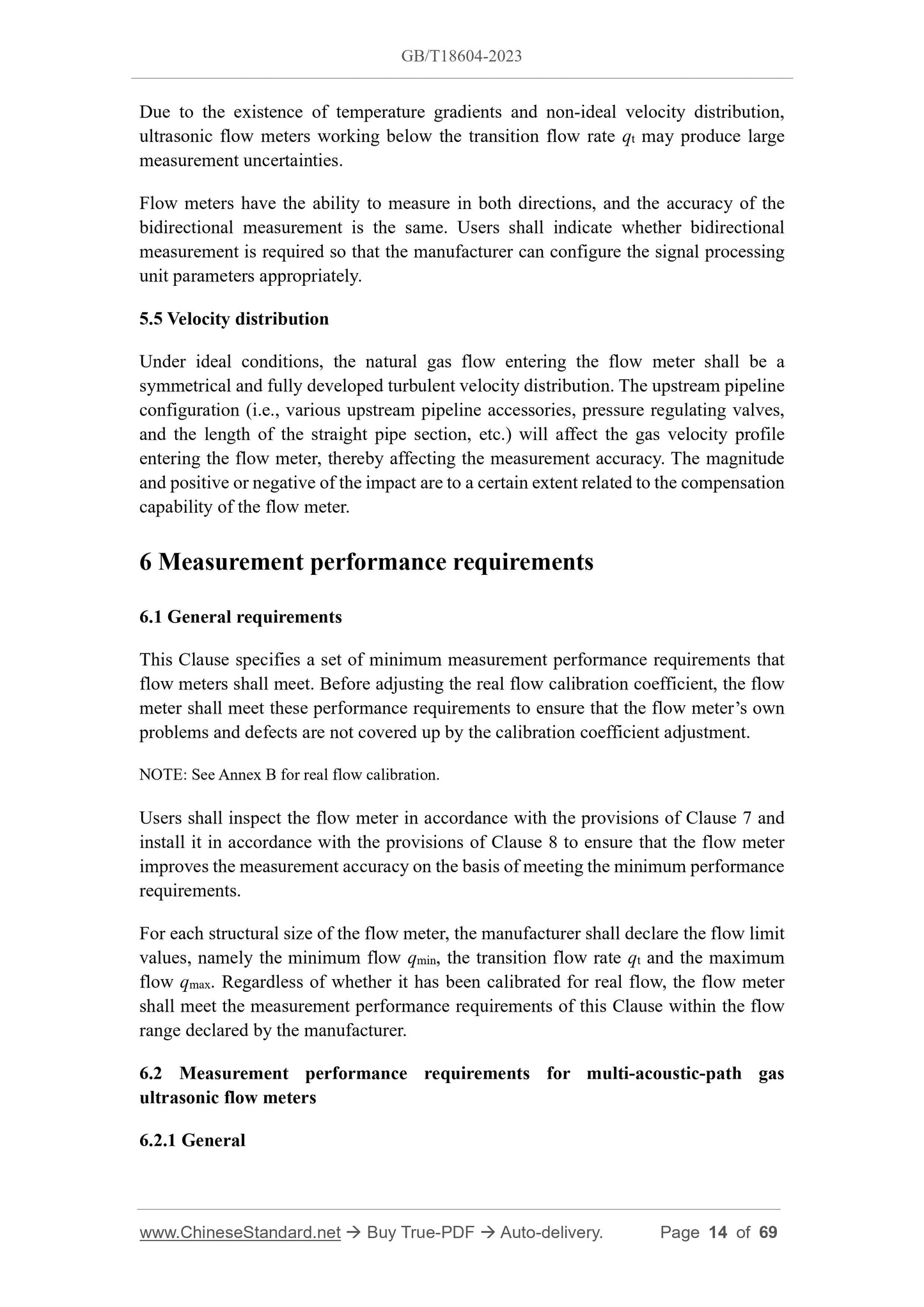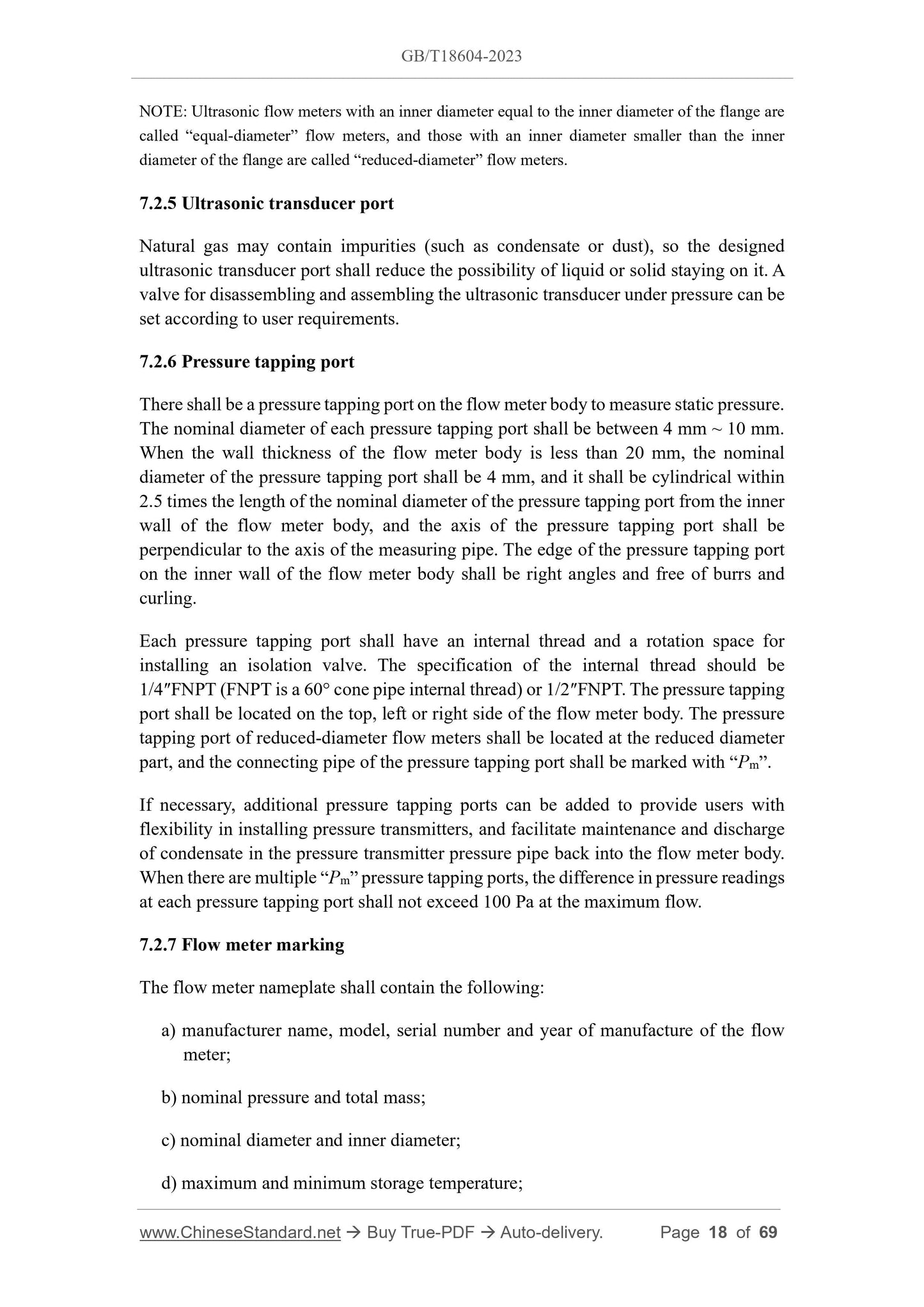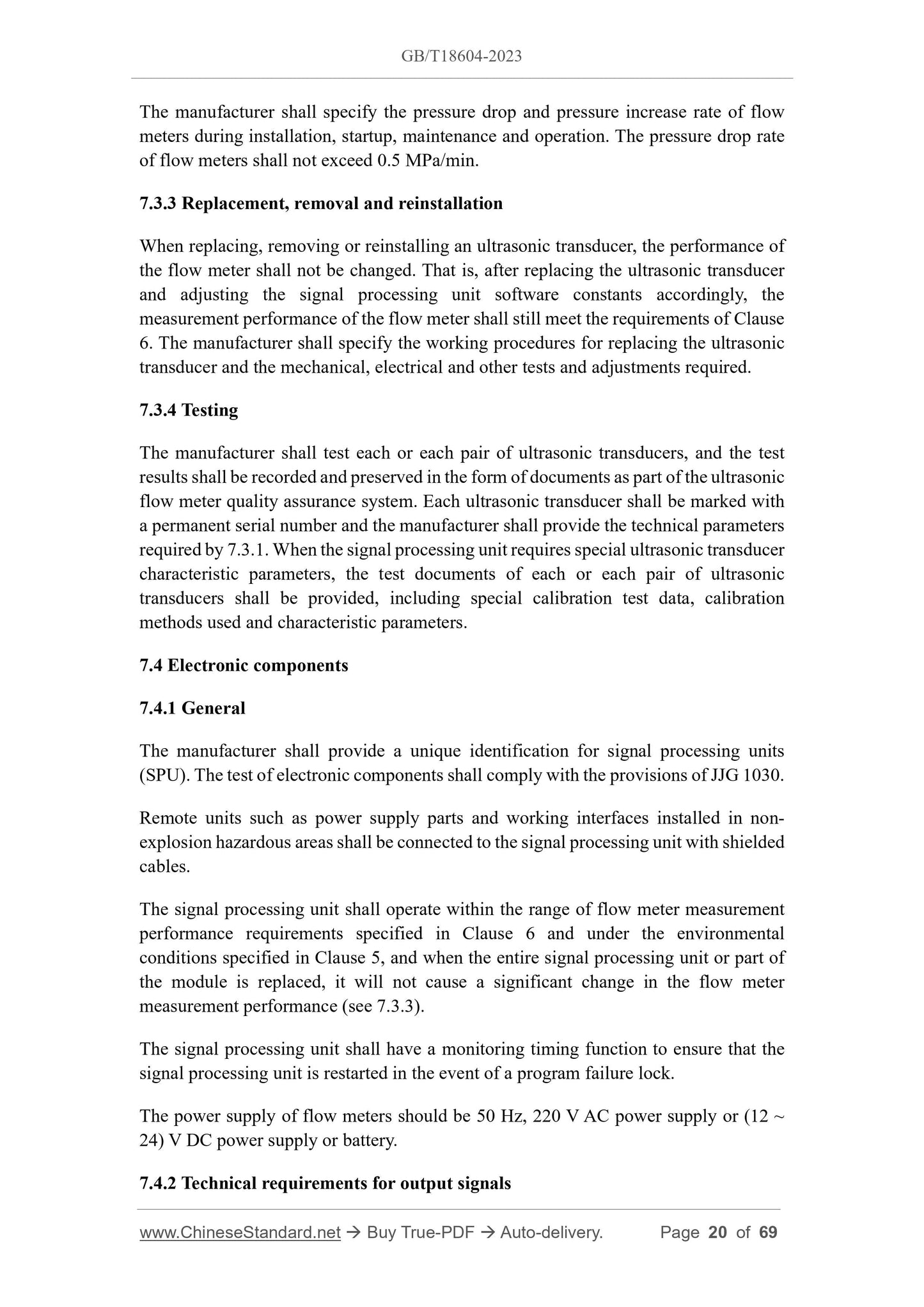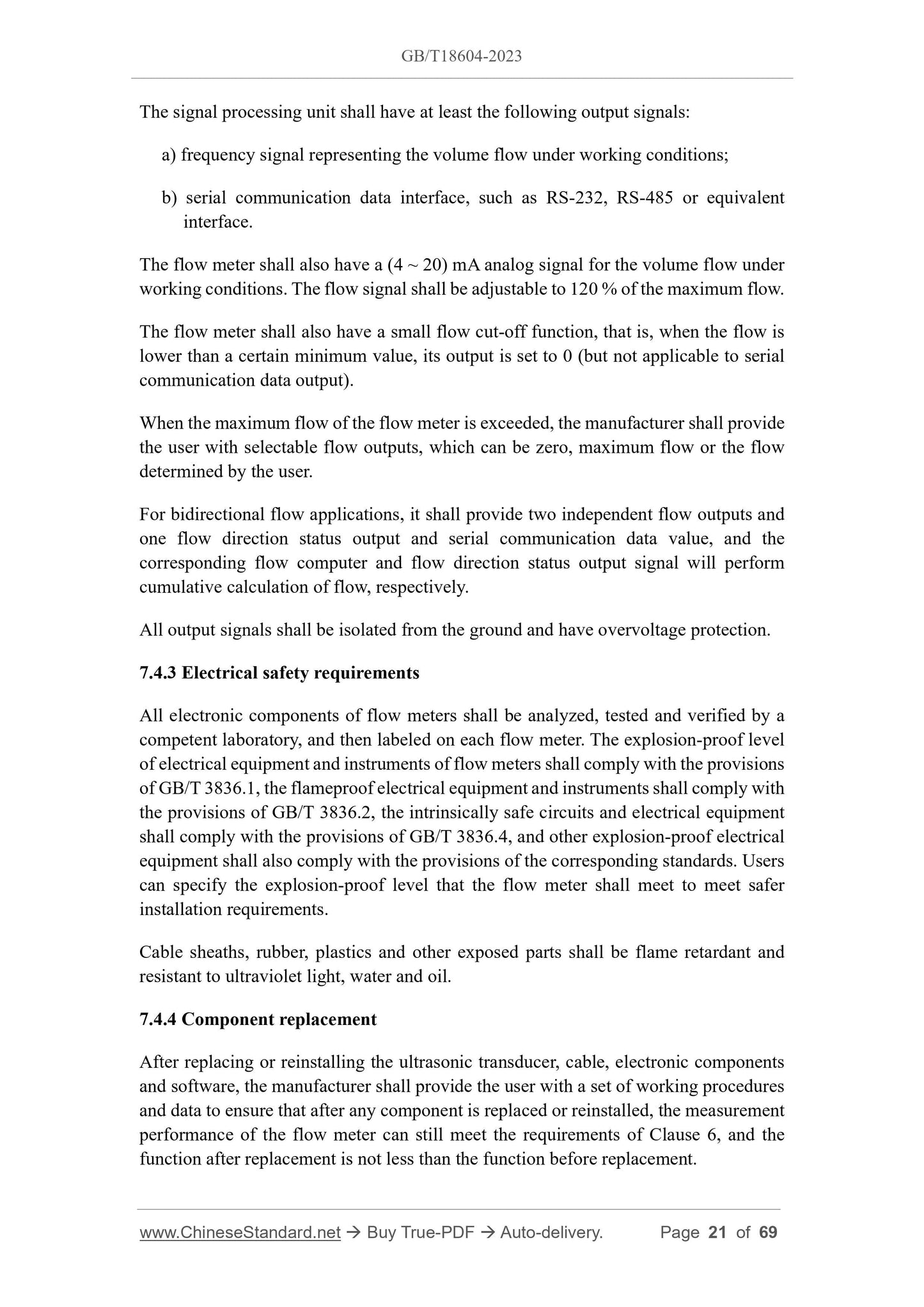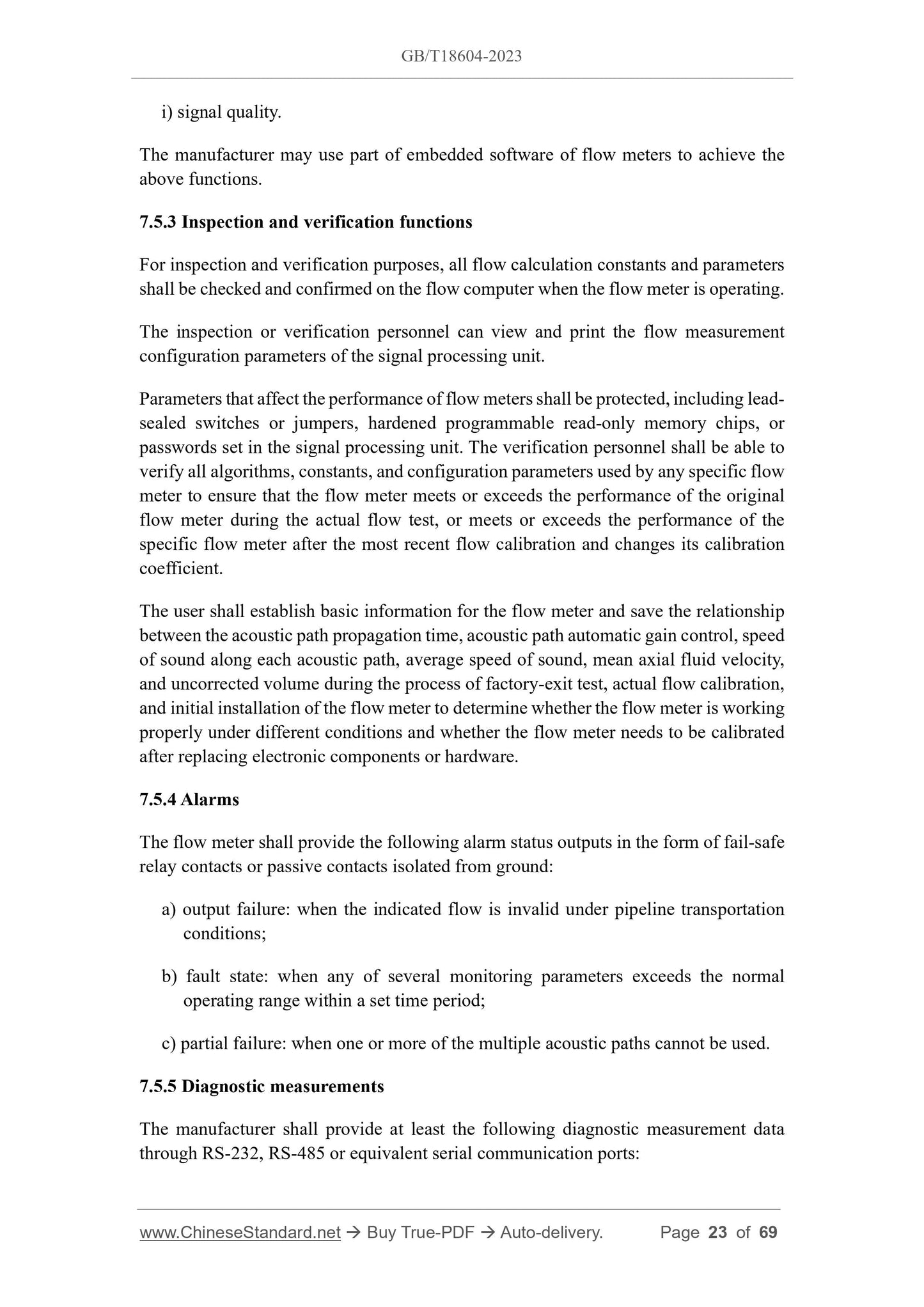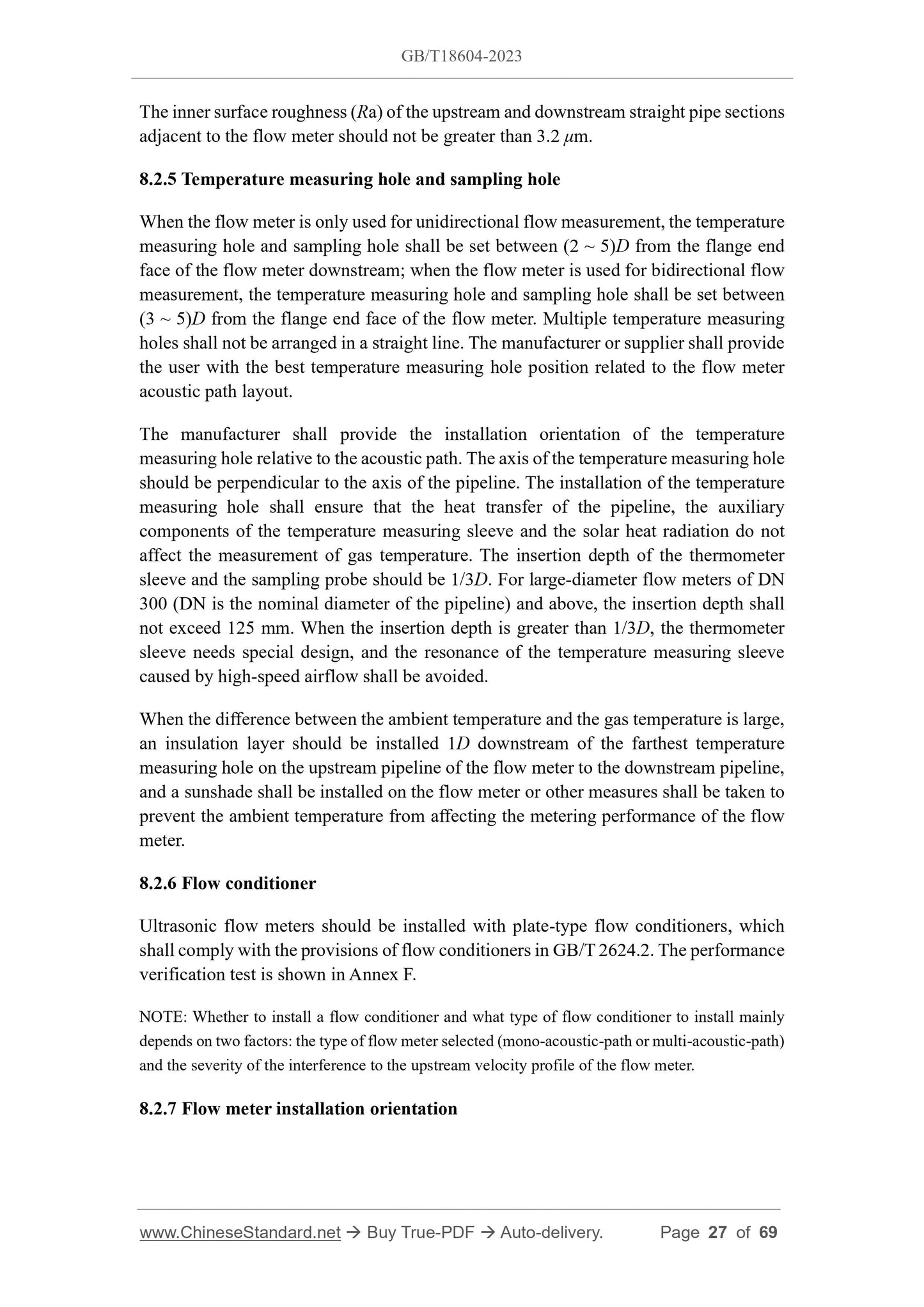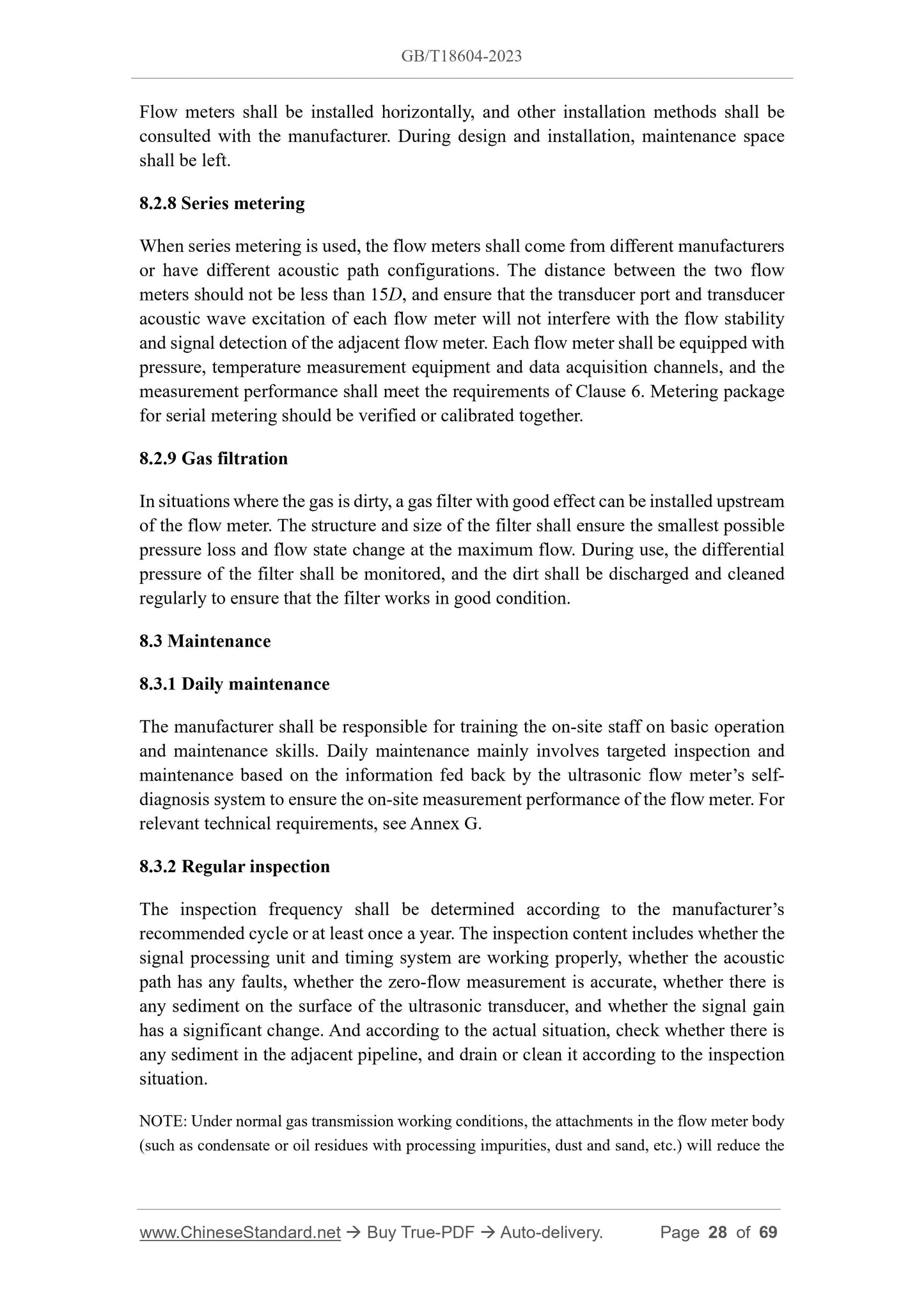1
/
of
12
www.ChineseStandard.us -- Field Test Asia Pte. Ltd.
GB/T 18604-2023 English PDF (GB/T18604-2023)
GB/T 18604-2023 English PDF (GB/T18604-2023)
Regular price
$680.00
Regular price
Sale price
$680.00
Unit price
/
per
Shipping calculated at checkout.
Couldn't load pickup availability
GB/T 18604-2023: Measurement of natural gas flow by gas ultrasonic flow meters
Delivery: 9 seconds. Download (and Email) true-PDF + Invoice.Get Quotation: Click GB/T 18604-2023 (Self-service in 1-minute)
Newer / historical versions: GB/T 18604-2023
Preview True-PDF
Scope
This document specifies the measurement performance, flow meter body, installationand maintenance, field verification test requirements, as well as flow calculation
method and measurement uncertainty estimation of insertion-type gas ultrasonic flow
meters using transit-time difference method (hereinafter referred to as “flow meters”).
This document applies to measurement of natural gas flow in gathering and
transmission equipment, gas transmission pipelines, storage facilities, gas distribution
systems, user metering systems, measuring standard devices and other application
places.
Basic Data
| Standard ID | GB/T 18604-2023 (GB/T18604-2023) |
| Description (Translated English) | Measurement of natural gas flow by gas ultrasonic flow meters |
| Sector / Industry | National Standard (Recommended) |
| Classification of Chinese Standard | E98 |
| Classification of International Standard | 75.180.30 |
| Word Count Estimation | 46,414 |
| Date of Issue | 2023-05-23 |
| Date of Implementation | 2023-12-01 |
| Older Standard (superseded by this standard) | GB/T 18604-2014 |
| Issuing agency(ies) | State Administration for Market Regulation, China National Standardization Administration |
Share
